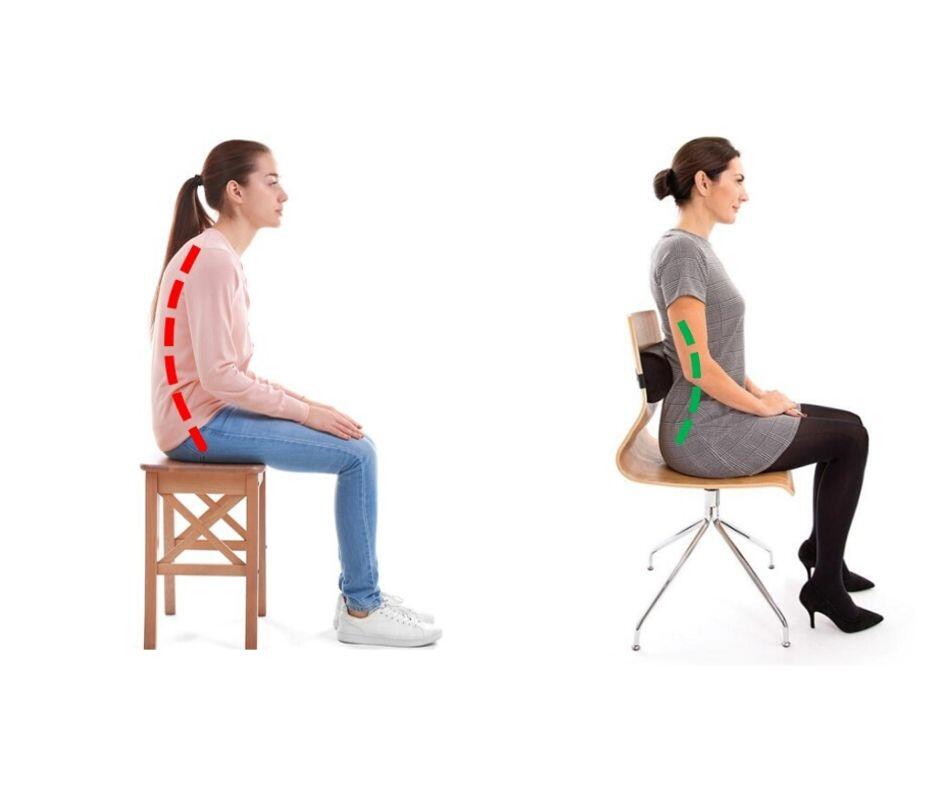In previous posts we talked about the benefits of moving away from a traditional seated workstation using sit-stand desks or desk raisers. However, this isn’t feasible for everyone, so today we will talk about how to select a more back-friendly chair and how best to modify it for a healthier spine.
/2020/06/09/using-a-lumbar-roll-to-prevent-and-relieve-low-A good office chair should:

An upright posture is important to minimise load on the muscles and joints during sitting. We therefore want a chair that supports an
upright posture and doesn’t encourage you to slump. So when looking for a chair opt for one:
Although sitting upright is better than sitting slumped, there is no single “perfect” sitting posture. Sitting rigidly with “good” posture will still lead to problems over time so it’s therefore important to stay as mobile as possible. With this in mind, along with taking regular breaks, ensure you also regularly adjust the position of the chair to help vary the load on the spine.
If buying a new chair, look for a chair with the following adjustable elements:

Another way to encourage move movement when sitting is to use a balance cushion on the chair’s seat pan. Using a balance cushion in this way creates some instability that encourages a more ‘active’ sitting posture. This helps to offset the negative effects of sitting including less pain and stiffness.

This page was written by Steffen Toates. Steffen is a chiropractor at Dynamic Health Chiropractic in Jersey, Channel Islands. For more information about Steffen click here.
© 2025 Dynamic Health. Powered by Oncord
Leave a Comment